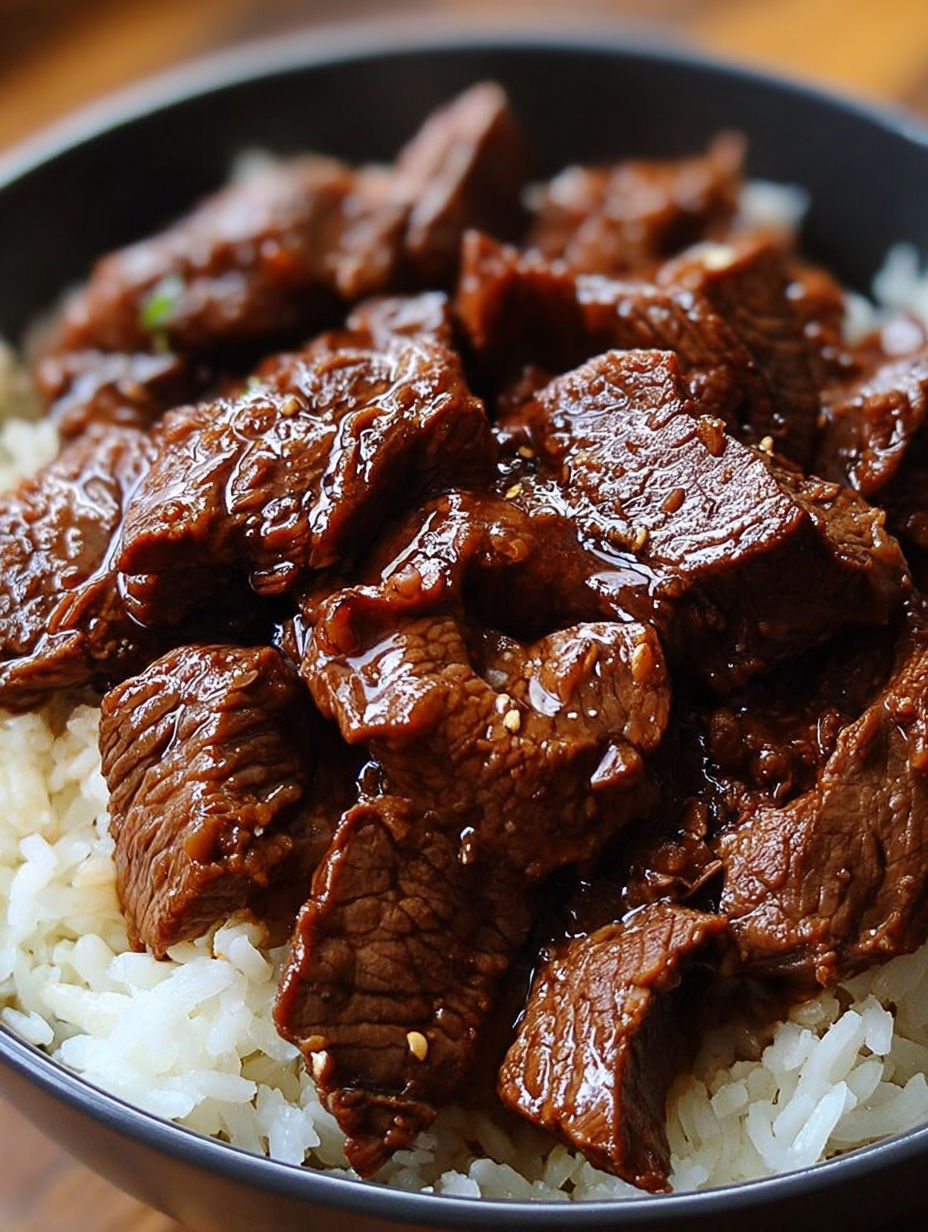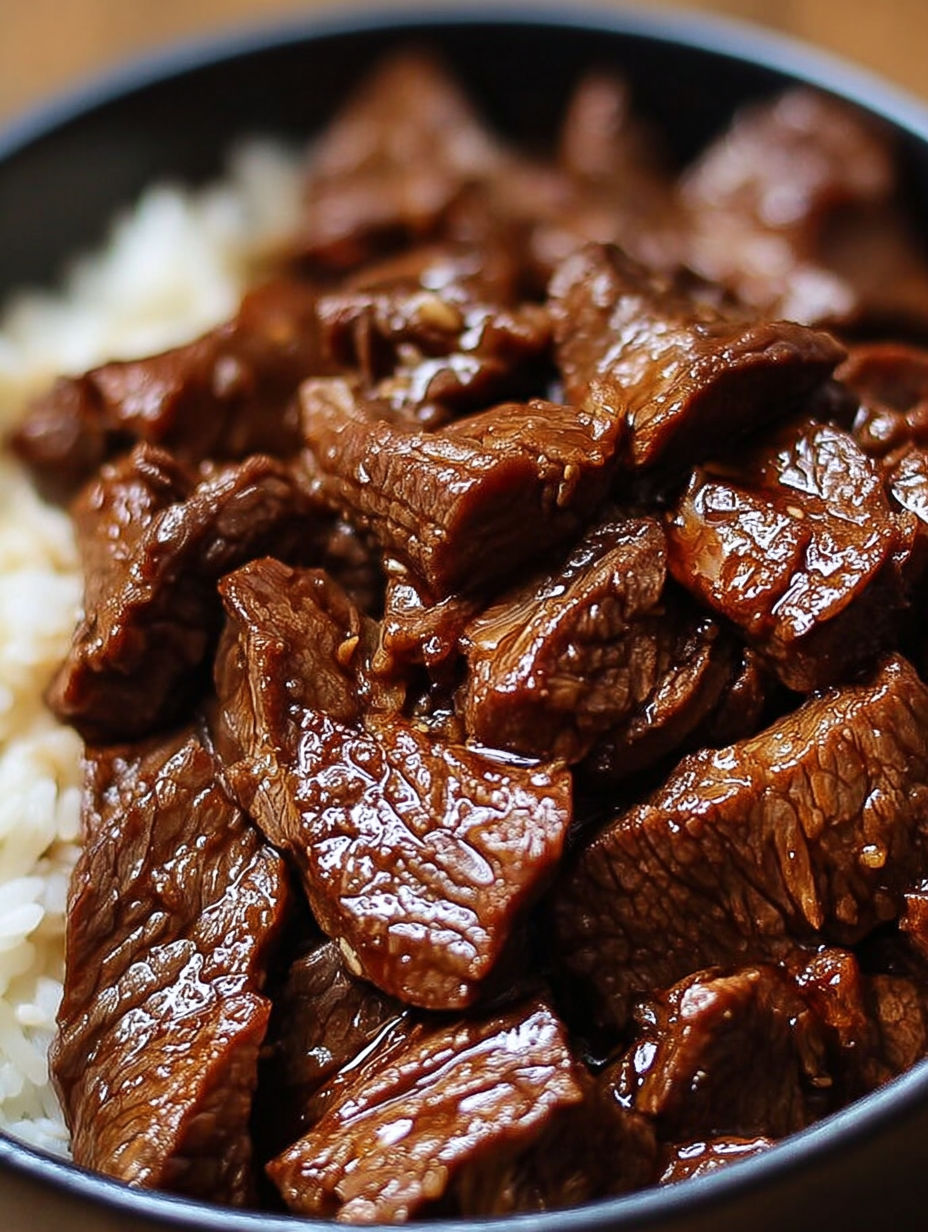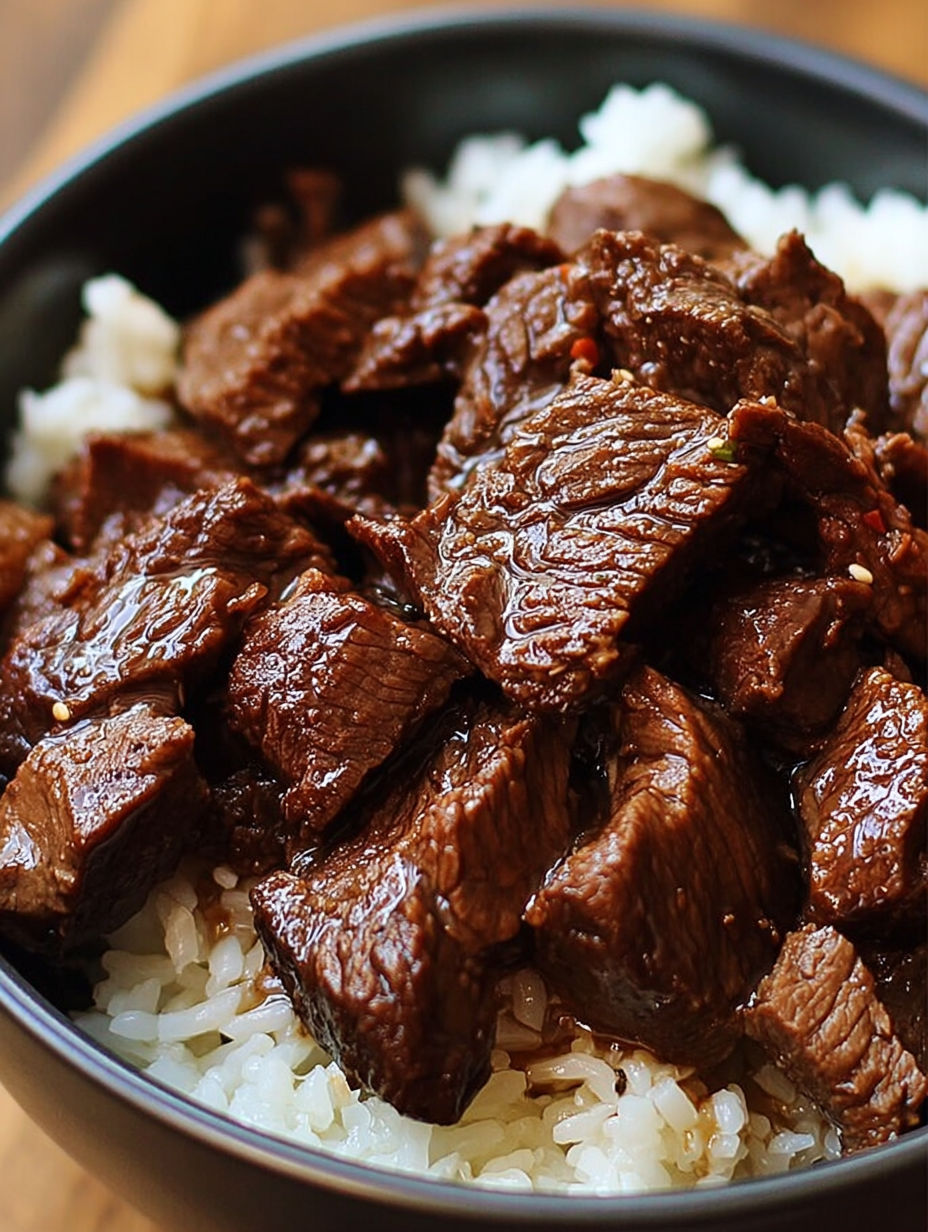 Save
Save
This slow cooker Korean beef is perfect for busy evenings when you want something rich and comforting with minimal effort. The tender beef soaks up a vibrant sauce that balances sweet, savory, and a touch of spice to satisfy any craving.
I first made this after stumbling upon a similar takeout recipe and it quickly became a weekend staple in my house. The sauce is addictive and everyone loves the easy prep.
Ingredients
- Onion: diced to add mild sweetness and body to the sauce Choose a firm onion free from soft spots
- Garlic: crushed to release intense flavor Fresh garlic cloves work best for pungency
- Ginger: minced for its fresh warmth Use young ginger for subtle brightness
- Rice wine vinegar: brings acidity to balance richness Pick a good quality vinegar for clean flavor
- Sesame oil: adds nutty depth It is strong so measure carefully
- Soy sauce: provides the salty umami backbone Select naturally brewed soy sauce for best taste
- Beef stock: enriches the liquid layer Use homemade or low sodium for control
- Brown sugar: rounds out the sauce with caramel sweetness Opt for dark brown sugar for deeper flavor
- Red chili flakes: give just a hint of heat Adjust more or less to your spice liking
- Chuck beef: cubed is great for slow cooking because it becomes tender and juicy Choose evenly sized pieces for consistent cooking
- Cornstarch slurry: thickens the sauce to a glossy finish Use fresh cornstarch mixed with cold water to avoid lumps
Instructions
- Build the Sauce Base:
- In your slow cooker, mix together diced onion garlic ginger rice wine vinegar sesame oil soy sauce beef stock brown sugar and red chili flakes. Stir thoroughly so all the ingredients blend and the sugar begins dissolving. This mixture creates the complex flavor foundation.
- Add the Beef:
- Place the beef cubes into the slow cooker and toss gently to coat every piece evenly with the sauce. This step is crucial to ensure the beef absorbs the marinade during cooking.
- Slow Cook:
- Cover your slow cooker and set it to low heat. Let the beef cook undisturbed for about eight hours. This long cooking time breaks down the collagen in the chuck roast making it tender and succulent.
- Make the Slurry:
- While the beef is finishing, combine the cornstarch and water in a small bowl. Stir until fully smooth with no lumps. The slurry will thicken the sauce at the end.
- Thicken the Sauce:
- Pour the slurry into the slow cooker and mix well. Increase the heat to high and cook for another thirty minutes. This final stage thickens the sauce so it clings beautifully to the beef pieces.
- Garnish and Serve:
- Spoon out the beef while draping a generous amount of sauce over. For added texture and appearance, sprinkle sliced green onions and toasted sesame seeds on top if desired.

One of my favorite things about this recipe is the balance of flavors. The sweet notes from brown sugar combined with the tangy vinegar and hint of chili remind me of dinners from a beloved Korean restaurant my family used to frequent. It always brings back warm memories and makes the slow cooking wait worth it.
Storage Tips
Store leftover beef and sauce in an airtight container in the fridge for up to four days. When reheating, add a splash of water or beef stock if the sauce seems too thick to loosen it gently. This also freezes well for up to three months. Let it thaw in the fridge overnight before warming.
Ingredient Swaps
You can swap chuck beef with brisket or short ribs for equally tender results though cooking times may vary slightly. Coconut aminos is a good substitute for soy sauce if you prefer a soy-free option. Use honey instead of brown sugar for a different sweetness profile but reduce by a quarter to avoid overpowering the dish.
Serving Ideas
Serve this Korean beef over steamed jasmine rice or sticky rice to soak up the sauce. It also pairs nicely with sautéed greens like bok choy or spinach. For added crunch, sprinkle crushed peanuts or fried shallots on top.

This slow cooker Korean beef offers a perfect balance of flavors and effortless prep for any night of the week.
Frequently Asked Recipe Questions
- → What cut of beef works best for slow cooking?
Chuck beef is ideal as it becomes tender and flavorful during long, slow cooking, breaking down the connective tissues perfectly.
- → Can I make this dish spicier?
Yes, increase the amount of red chili flakes or add gochujang for a deeper, spicy kick that complements the savory flavors.
- → How can I thicken the sauce without cornstarch?
Simmer the sauce longer on high heat or use alternatives like arrowroot powder or flour mixed with water for a similar effect.
- → What can I serve alongside this beef for a balanced meal?
Steamed white or brown rice pairs well, along with sautéed or steamed vegetables such as bok choy, carrots, or broccoli.
- → Is it possible to speed up the cooking time?
Yes, using a pressure cooker can reduce the cooking time significantly to about 45 minutes while still achieving tender meat.
